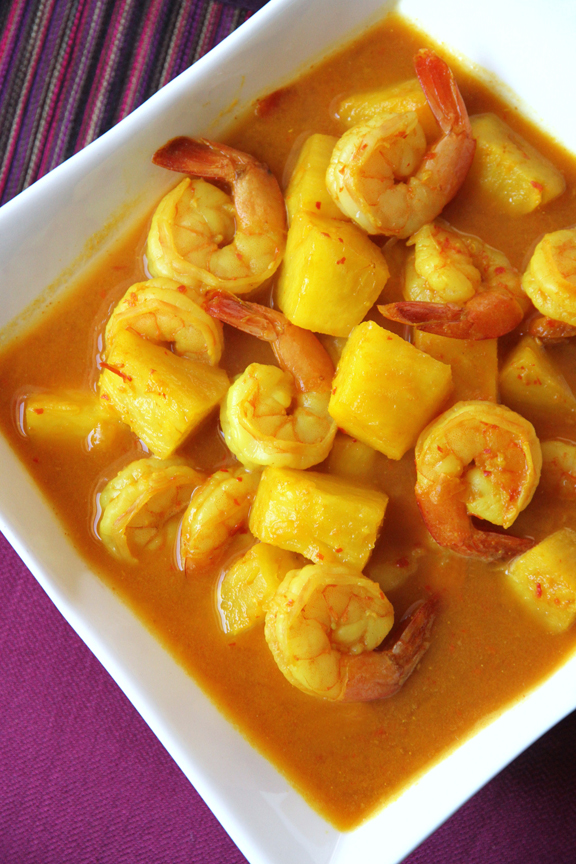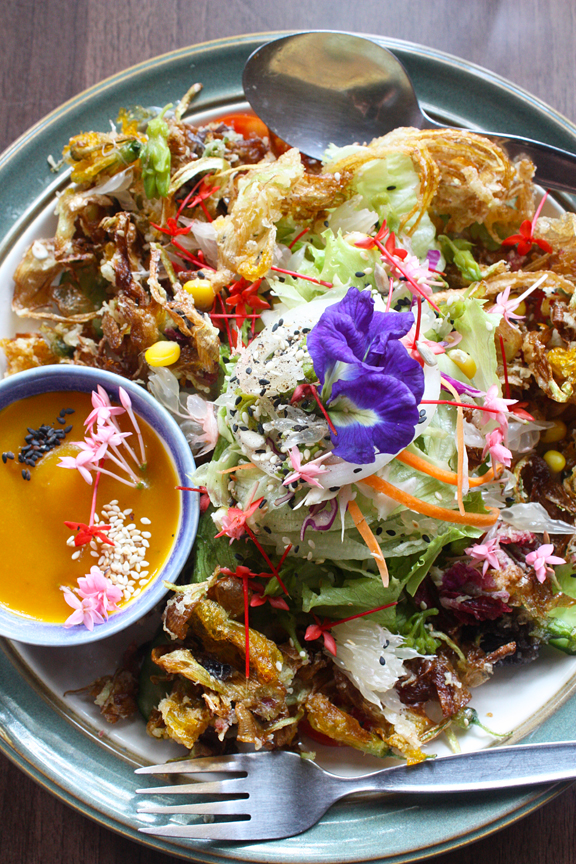
Remember how I was telling you that what is generally referred to as “yellow curry” at many Thai restaurants with English-language menus isn’t what is known as “yellow curry” in the Thai language but a milder, turmeric-tinted curry we call kaeng kari (kari curry)? Now this is the actual “yellow curry” (แกงเหลือง) which is what the Centralites call Southern sour curry (the Southern counterpart of the Central sour curry, kaeng som). And remember Wanvipa Koonpan, one of the owners of Bangkok Kitchen, a no-frills, down home rice-curry shop in London which I’d recently introduced to you? This is my adaptation of the recipe which she learned while spending a few years in Samui prior to her move to England.
But first, here’s a word of warning.
In general, Thai food is not always fiery hot as rumored. Also, a high level of heat (as in ‘spicy heat’) is definitely not a requirement, let alone a mark of quality, in many dishes (those who complain about Thai-style satay sauce or massaman curry being not ‘hot enough,’ I’m looking at you). Even dishes that are on the hot side (e.g. red curry which is generally hotter than massaman) can be excellent even when they’re mild. However, when it comes to southern Thai food, things are a little different. If a dish is supposed to be hot, it has to be very hot and anything milder (as subjective as it is) seems to be regarded as inferior — at least by southerners. This is to say: this curry you’re looking at is very hot.
Continue Reading →












